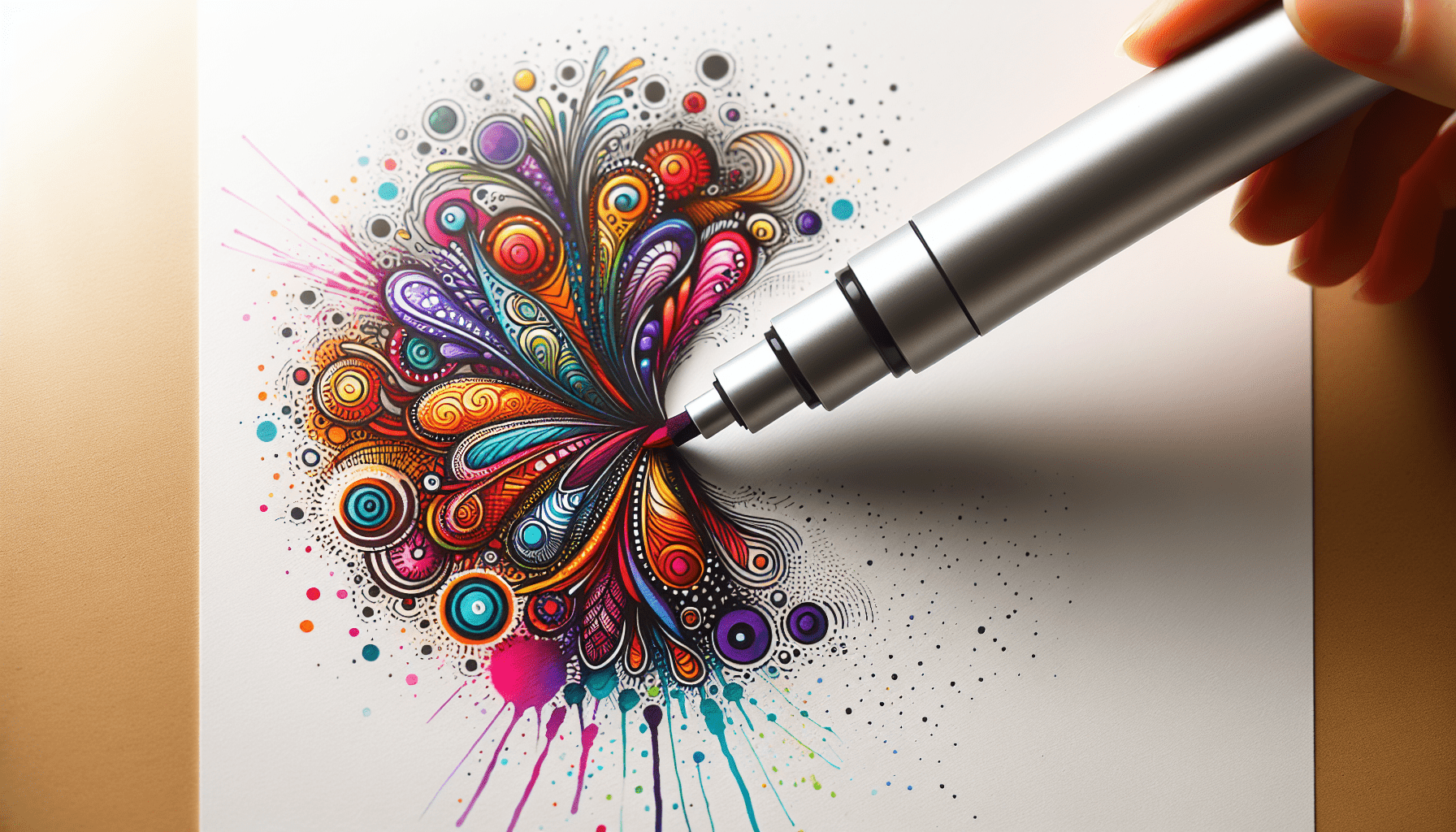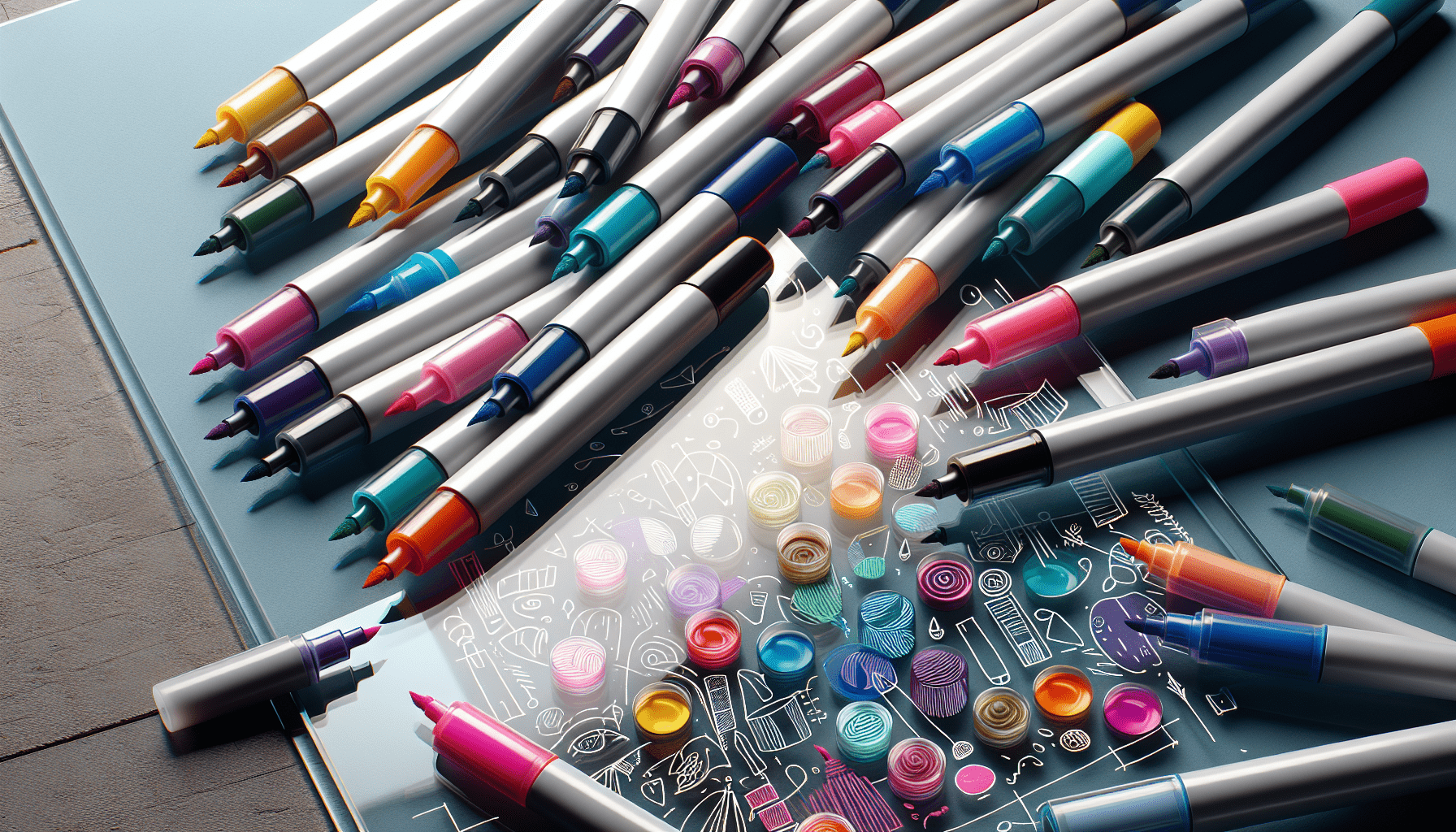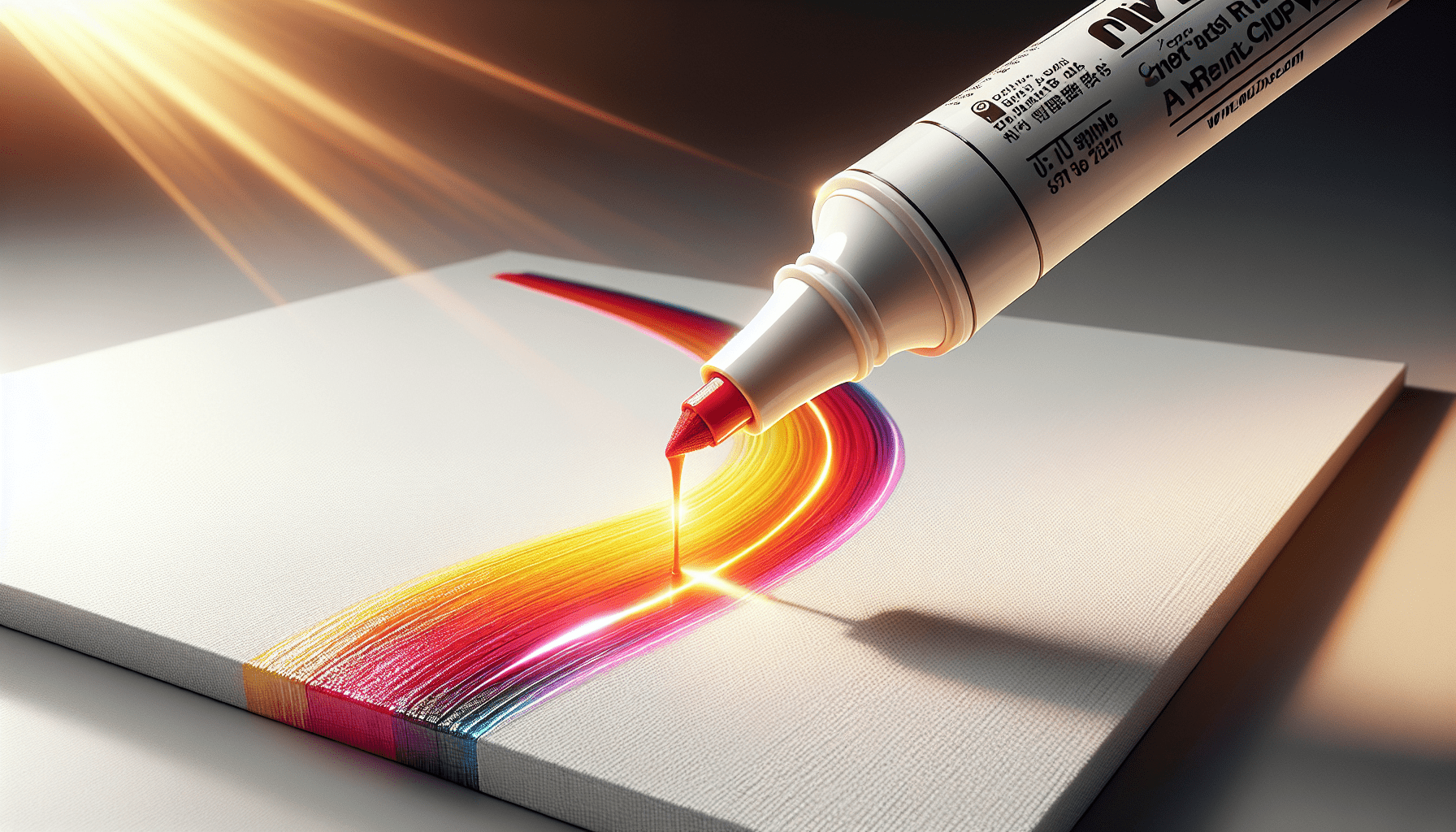Can you use chalk markers on chalkboard paint? This is a question many people find themselves asking when looking to combine the flexibility of chalkboard paint with the vibrant colors and crisp lines of chalk markers. Understanding how these two mediums interact, and the best practices for using them together, is key to achieving the results you desire.
What Are Chalk Markers?
Chalk markers, also known as liquid chalk, are markers filled with liquid ink that dries to mimic the appearance of chalk. They are commonly used for creating striking, smudge-proof designs that stand out on a variety of surfaces. Chalk markers offer various advantages over traditional chalk, such as producing brighter colors and more precise lines. Unlike traditional chalk, which can be dusty and less intense, chalk markers provide a modern alternative for artists and decorators alike.
Advantages of Chalk Markers
- Brightness: Chalk markers offer vivid, bright colors that can enhance any decoration or artwork.
- Precision: They allow for more controlled and precise lines compared to traditional chalk.
- Dust-Free: They eliminate the dust associated with traditional chalk, making them cleaner to work with.
Disadvantages of Chalk Markers
- Permanence: Depending on the type of surface, chalk markers might be more difficult to remove.
- Surface Limitation: Not all surfaces can accommodate chalk markers as they might cause staining or ghosting.
What is Chalkboard Paint?
Chalkboard paint transforms ordinary surfaces into chalkboards that can be written on with traditional chalk or chalk markers. It offers an interactive element to walls, furniture, and other items, thus enhancing creativity and utility in various settings such as homes, schools, and businesses.
Advantages of Chalkboard Paint
- Versatility: You can apply chalkboard paint to virtually any surface.
- Reusability: Surfaces painted with chalkboard paint can be reused multiple times.
- Cost-Effective: It is a budget-friendly way to create custom writable surfaces.
Disadvantages of Chalkboard Paint
- Surface Preparation: Requires thorough prepping to achieve the desired finish.
- Durability: May wear down over time and require repainting.
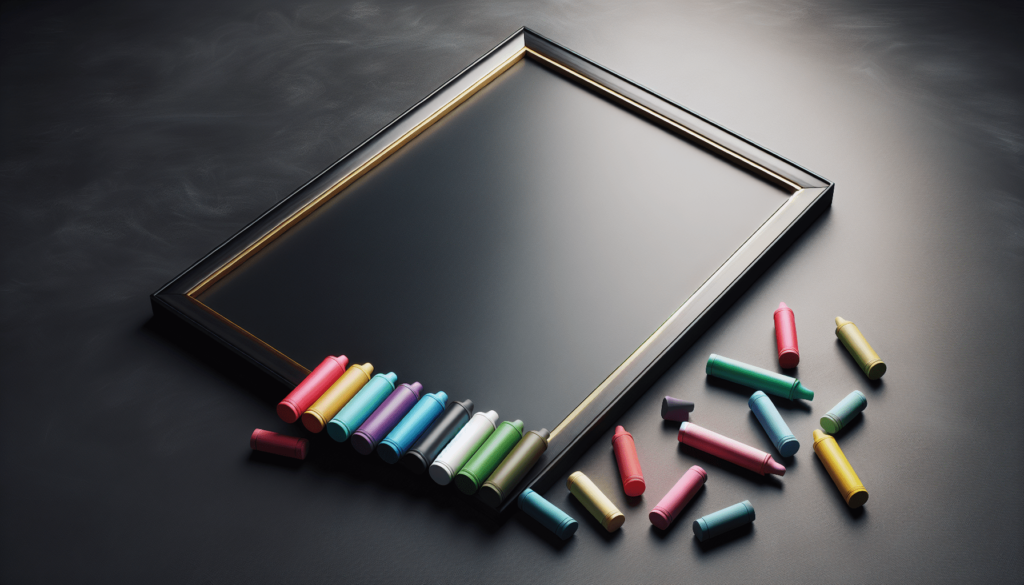
Compatibility: Can You Use Chalk Markers on Chalkboard Paint?
The key question is whether chalk markers can be effectively used on surfaces coated with chalkboard paint. The short answer is, yes, you can use chalk markers on chalkboard paint, but there are several considerations to keep in mind to ensure the best results and to avoid damaging your surface.
Factors to Consider
- Type of Chalk Marker: Not all chalk markers are created equal. Some are designed specifically for non-porous surfaces and may not work well on chalkboard paint.
- Type of Chalkboard Paint: High-quality chalkboard paints create a smoother, more durable surface, which is more suitable for chalk markers.
- Surface Preparation: Thorough preparation of the surface ensures that the chalk markers will work effectively and avoid potential issues such as ghosting.
Preparing the Surface for Chalk Markers
Proper preparation of your chalkboard-painted surface is essential for the best performance when using chalk markers. Here are steps you can take to ensure your surface is ready:
Surface Cleaning
Before using chalk markers, ensure that the surface is clean and free of debris. Dust and residues might affect the adherence and clarity of the chalk marker ink.
Priming
Priming involves rubbing the entire chalkboard surface with a piece of traditional chalk, then wiping it off. This step is crucial as it conditions the surface and fills any tiny pores, which can prevent ghosting and improve the durability of the markings.
Testing
It may be a good idea to test the chalk marker on a small, inconspicuous area of the chalkboard-painted surface. This helps to see if the marker is compatible and easy to remove without causing damage.
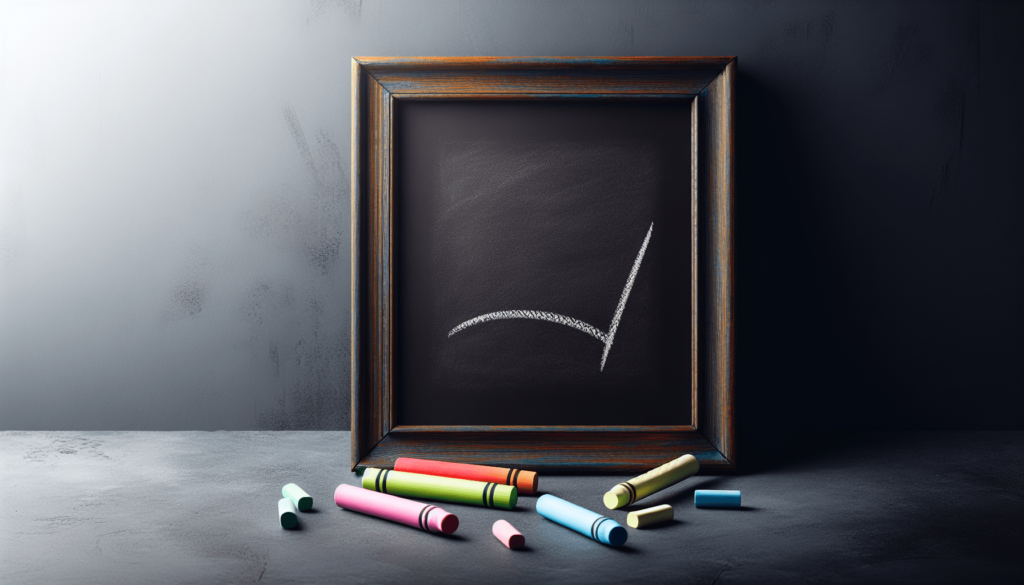
Applying Chalk Marker on Chalkboard Paint
Once the surface is prepared, you can start using your chalk markers. Follow these guidelines to achieve the best results:
Application Techniques
- Shake Well: For even ink distribution, shake the marker well before use.
- Prime the Tip: Press the marker tip on a piece of scrap paper to initiate the ink flow.
- Smooth Strokes: Use smooth, even strokes to apply the marker for more consistent and vibrant lines.
Layering and Blending
Chalk markers allow for layering and blending of colors. This can be effective for creating gradients and depth in your drawings or writings.
Drying Time
Allow sufficient drying time for the ink to set and avoid smudging. Although chalk marker ink dries quickly, letting it sit for a bit longer can ensure the best results.
Removing Chalk Marker Ink from Chalkboard Paint
Eventually, you will need to clean off the chalk marker ink. Here’s a step-by-step approach to doing this effectively:
Standard Cleaning
For regular cleaning, use a damp cloth to gently wipe off the markings. This should be sufficient for most situations, especially if the markings are recent.
Stubborn Residue
For more stubborn marks, you might need stronger cleaning agents. Here are some recommended solutions:
| Cleaning Agent | Method |
|---|---|
| Vinegar Solution | Mix equal parts of distilled vinegar and water, then use a soft cloth to clean the marks. |
| Mild Detergent | Mix a small amount of dish detergent with water and wipe the area with a cloth. |
| Commercial Cleaner | Look for a cleaner specifically designed for chalkboards, and follow the manufacturer’s instructions. |
Avoiding Ghosting
Ghosting refers to the faint residue left behind after cleaning off the chalk marker. To avoid this, ensure that you wipe down the surface completely and avoid letting the ink sit for prolonged periods.
Maintenance and Longevity
Maintaining a chalkboard-painted surface involves routine care and occasional touch-ups to ensure it remains in top condition.
Regular Maintenance
- Routine Wiping: Regularly clean the surface to avoid build-up of residues.
- Avoid Harsh Tools: Do not use abrasive tools or cleaners as they can damage the surface.
Repainting
Over time, the chalkboard paint surface might degrade. Reapplying a fresh coat of chalkboard paint can restore its performance and usability.
Comparing Chalk Markers and Traditional Chalk
For a comprehensive understanding, let’s compare the use of chalk markers against traditional chalk on chalkboard paint.
| Feature | Chalk Markers | Traditional Chalk |
|---|---|---|
| Color Vibrancy | Brighter and more vivid | Softer and less intense |
| Dust | Dust-free | Produces dust |
| Precision | Allows for fine lines and detailed work | Best for broader, less precise illustrations |
| Removal | May require specific cleaners | Easier to erase with a simple cloth |
| Surface Wear | Can cause ghosting if left for too long | Generally does not cause ghosting |
Use Cases
Chalk Markers are ideal for more permanent displays, detailed artwork, and high-traffic areas where durability is essential.
Traditional Chalk is perfect for temporary notes, quick sketches, and scenarios where frequent updating is necessary.
Frequently Asked Questions
Are All Chalk Markers Suitable for Chalkboard Paint?
Not necessarily. It is essential to check the manufacturer’s recommendations. Some markers are designed for non-porous surfaces and might not be ideal for chalkboard paint.
How Can I Prevent Ghosting?
Proper surface preparation, using high-quality chalk markers, and cleaning off the ink promptly can help prevent ghosting.
Is Chalkboard Paint Durable Enough for Commercial Use?
Yes, high-quality chalkboard paint is suitable for commercial applications such as restaurants, offices, and classrooms. However, regular maintenance and occasional touch-ups are recommended.
Do Chalk Markers Wash Off Clothing?
Chalk marker ink is generally water-based and can be washed out of most fabrics. However, it is advisable to check the specific product details as some may have different formulations.
Can I Use Chalk Markers on Other Surfaces?
Chalk markers are versatile and can be used on other non-porous surfaces such as glass, metal, ceramics, and plastics. Always conduct a spot test to ensure compatibility.
Conclusion
Chalk markers and chalkboard paint can be used together effectively, provided you prepare the surface correctly and choose the right tools. By understanding the properties and best practices for each, you can leverage their strengths to create vivid, long-lasting designs and writings. Whether you’re decorating your home, planning events, or designing commercial spaces, this combination offers a versatile and creative medium to bring your ideas to life.

